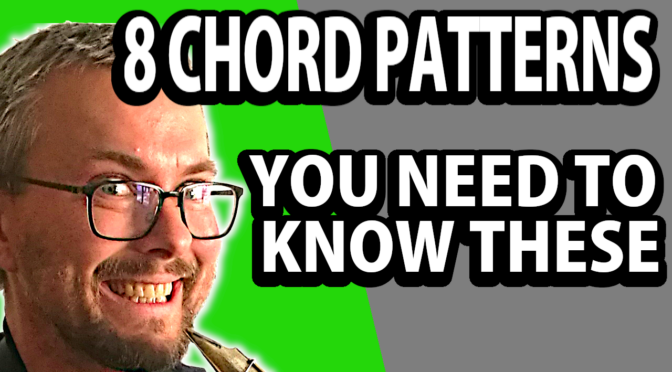The 8 most important chord patterns
You need to know your chords.
With the chords you also need to know how to play these.
The more ways you can play a certain group of notes the more flexibility you have.
Here are 8 of the most used and played chord patterns in jazz and how to use them.
Why is it important to learn chord patterns?
What is a chord pattern?
Chord pattern number 1 + example on how to practise.
Chord pattern number 2 + example on how to practise.
Chord pattern number 3 + example on how to practise.
Chord pattern number 4 + example on how to practise.
Chord pattern number 5 + example on how to practise.
Chord pattern number 6 + example on how to practise.
Chord pattern number 7 + example on how to practise.
Chord pattern number 8 + example on how to practise.
Show, play and analyse short a solo on “There will never be another you” using chord patterns
Get the full transcription of the lesson:
https://www.patreon.com/posts/41196433
Get more value from the Youtube lessons by supporting me:
https://www.patreon.com/sorenballegaardsaxophonelessons
Get the free E-book material on saxophone practice – sign up for my newsletter: https://mailchi.mp/cc449eb965d2/soren-ballegaard-saxophone-lessons
Video links:
“Chord pattern exercise manual – basic 7th chords of the major scale”
Patreon
https://www.patreon.com/posts/41195255
Shop
https://sorenballegaard.dk/product/chord-pattern-exercise-manual-basic-7th-chords-of-the-major-scale/
“Jazz chords – This is how to learn and remember”
https://youtu.be/TMUDOBf5Bg0
Get more value from the Youtube lessons by supporting me:
https://www.patreon.com/sorenballegaardsaxophonelessons
Get the free E-book material on saxophone practice – sign up for my newsletter: https://bit.ly/subscribetomynewslettersorenballegaardsaxophonelessons
Subscribe for more free saxophone videos and lessons: https://www.youtube.com/c/SørenBallegaard
Lesson tutorials and live online lessons – check my shop:
https://sorenballegaard.dk/shop
Contact me for video exchange lessons or live online lessons
https://sorenballegaard.dk/saxophonelessons/
Facebook: https://www.facebook.com/groups/sorenballegaardsaxophonelessons
Instagram: https://www.instagram.com/sorenballegaard
Website: https://sorenballegaard.dk
Twitter: https://twitter.com/SorenBallegaard
My setup:
Video camera: https://amzn.to/2S7hrUv
Web-cam: https://amzn.to/3cf71cb
Music notation software – https://amzn.to/3gHW1ag
2x computer monitor – https://amzn.to/3gIclIm
Mini keyboard for music notation – https://amzn.to/3sVufcWTenor saxophone: Selmer MKVI 82xxx
Mouthpiece is an old Otto Link Babbit – refaced from opening 6 to opening 8/8,5
Alto – The Martin Alto
Soprano – Yanagisawa Elimona
Tenor reeds – https://amzn.to/2Qrk8zz
Alto reeds –https://amzn.to/2Pwv8Lu
Soprano reeds – https://amzn.to/3vnHfJS
Saxophone strap – https://amzn.to/3sV20Lt
Alto mouthpiece – https://amzn.to/3sZvdF0
Soprano mouthpiece – https://amzn.to/2R6mvI0
Alto Ligature – https://amzn.to/3xvCn7E
Tenor Saxophone Case – https://amzn.to/32SD1xG
Alto Saxophone Case – https://amzn.to/3aIqxgu










